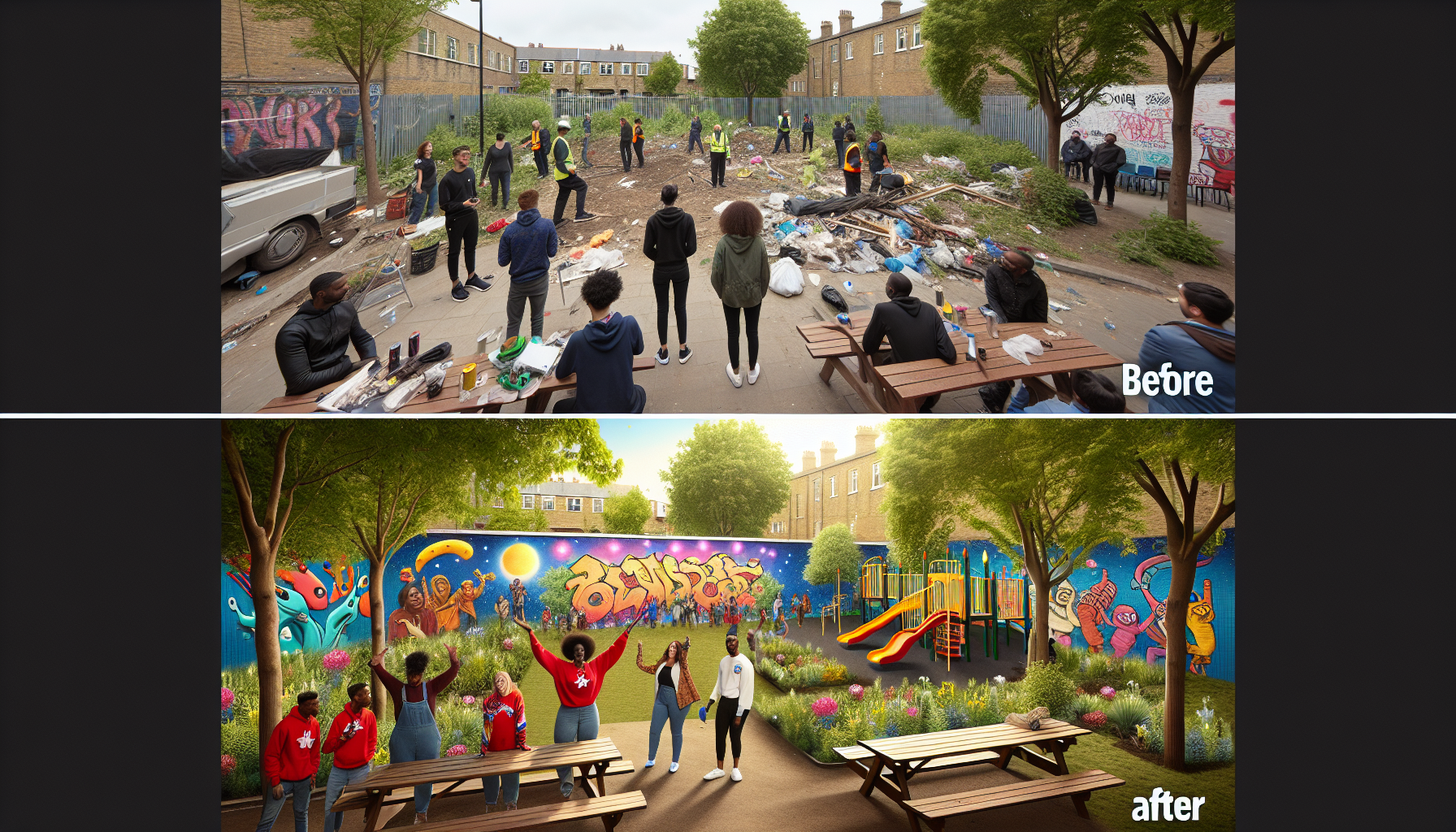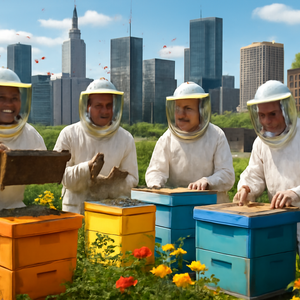The Intersection of Nature and Technology in Urban Landscapes

Urban farms are cropping up in cities around the globe, transforming vacant lots and rooftops into productive green spaces. These farms not only provide fresh, locally grown produce but also serve as community hubs that promote sustainability and environmental education. For instance, Brooklyn Grange in New York City operates the world’s largest rooftop soil farm, producing over 50,000 pounds of organic vegetables each year. Such initiatives help combat food deserts and reduce the carbon footprint associated with transporting food. Moreover, urban farming fosters community engagement, as residents often participate in planting, harvesting, and educational workshops, creating a sense of ownership and responsibility towards their local environment.
Smart Parks: Merging Greenery with Technology
Smart parks are redefining public spaces by incorporating technology to enhance user experience and foster environmental stewardship. These parks often feature interactive installations, sensors to monitor air quality, and smart irrigation systems that optimize water use. The Smart Park initiative in Barcelona integrates technology to provide real-time data on park usage, helping city planners make informed decisions about maintenance and improvements. Additionally, parks like Millenium Park in Chicago have incorporated art, music, and technology into their green spaces, offering visitors a multi-sensory experience. These parks not only offer recreational spaces but also educate visitors on sustainability practices, encouraging them to take an active role in their environment.
Eco-Friendly Architecture: Designing with Nature in Mind
Architects and developers are increasingly prioritizing eco-friendly designs that harmonize with their natural surroundings. Buildings that incorporate green roofs, living walls, and sustainable materials not only reduce energy consumption but also improve air quality and biodiversity. The Bosco Verticale (Vertical Forest) in Milan is a prime example of this trend, featuring residential towers adorned with thousands of trees and plants. This innovative design not only provides insulation but also creates habitats for various species, promoting urban biodiversity. As cities face challenges like climate change, eco-friendly architecture becomes essential, combining aesthetic appeal with environmental responsibility.
Community Engagement: Building Connections through Green Spaces
The integration of nature and technology in urban landscapes goes beyond physical structures; it fosters community engagement and environmental awareness. Many urban farms, smart parks, and eco-friendly buildings include programs that invite local residents to participate in workshops, volunteer days, or educational events. For instance, the Edible Schoolyard Project in Berkeley, California, teaches children about gardening, nutrition, and sustainability, instilling a sense of responsibility towards the environment from an early age. Such community-focused initiatives empower residents to become stewards of their local ecosystems, thereby strengthening the bond between individuals and their environment.
Supporting Examples and Evidence
Research indicates that access to green spaces can significantly enhance mental well-being, reduce stress, and improve overall health. A study published in the journal *Environmental Science & Technology* found that individuals living near green spaces have lower levels of anxiety and depression. This evidence underscores the importance of integrating nature into urban planning. Additionally, cities like Singapore, often referred to as a “City in a Garden,” have implemented policies that mandate green spaces in new developments, demonstrating the successful fusion of nature and technology in urban environments. By investing in green infrastructure, cities can yield substantial health benefits for their populations while also addressing pressing environmental issues.
The fusion of nature and technology in urban landscapes represents a transformative shift in how we conceive and design our cities. Urban farms, smart parks, and eco-friendly architecture not only contribute to sustainability but also enhance the quality of life for residents. As cities continue to evolve, embracing this intersection will be crucial in creating environments that are not only functional but also nurturing. By fostering a deeper connection between residents and nature, we can build urban spaces that are resilient, vibrant, and conducive to a sustainable future. The path ahead is clear: integrating nature and technology is not just a trend; it is a necessity for the well-being of urban dwellers and the planet as a whole. Through these innovative approaches, we can reimagine urban living as a harmonious blend of human ingenuity and the natural world.
Urban Agriculture Specialist
Core Responsibilities
Design and implement urban farming projects that maximize land use efficiency in metropolitan areas.
Collaborate with community organizations to promote sustainable farming practices and provide educational workshops.
Monitor crop yields and soil health, utilizing data analytics to optimize farming techniques.
Required Skills
Strong knowledge of horticulture, agronomy, or related fields.
Experience with hydroponics or aquaponics systems.
Familiarity with community engagement and outreach programs.
Common Employers
Urban farming initiatives
non-profit organizations focused on food security
local government agencies
Smart Park Technician
Core Responsibilities
Install and maintain technology systems in public parks, including sensors for air quality and water usage monitoring.
Analyze data collected from smart technologies to improve park infrastructure and user experience.
Collaborate with city planners to integrate technology into new park designs effectively.
Required Skills
Proficient in data analysis and environmental monitoring tools.
Technical background in IT or engineering, with a focus on IoT (Internet of Things) applications.
Strong problem-solving skills and ability to work in outdoor settings.
Common Employers
City parks and recreation departments
technology firms specializing in smart city solutions
Sustainable Architecture Designer
Core Responsibilities
Develop architectural designs that incorporate sustainable materials and energy-efficient systems.
Conduct environmental impact assessments and collaborate with engineers to ensure eco-friendly construction practices.
Stay abreast of green building certifications and regulations to ensure compliance.
Required Skills
Bachelor’s or Master’s degree in architecture with a focus on sustainable design.
Proficiency in design software such as AutoCAD, SketchUp, or Revit.
Knowledge of LEED certification processes and energy modeling software.
Common Employers
Architectural firms
construction companies
governmental agencies focused on sustainable development
Environmental Educator
Core Responsibilities
Develop and implement educational programs related to urban ecology and sustainability for community members.
Facilitate workshops and hands-on activities in urban farms and green spaces to engage diverse audiences.
Collaborate with schools and organizations to promote environmental stewardship initiatives.
Required Skills
Background in environmental science, education, or related fields.
Strong communication and public speaking skills to effectively engage various age groups.
Experience in curriculum development and community outreach.
Common Employers
Non-profit organizations
educational institutions
community centers
Landscape Ecologist
Core Responsibilities
Conduct research to assess the ecological health of urban landscapes and recommend strategies for improvement.
Utilize GIS technology to analyze spatial data related to urban green spaces and biodiversity.
Work with urban planners to integrate ecological principles into city design and policies.
Required Skills
Advanced degree in ecology, environmental science, or a related field.
Proficiency in GIS software and ecological modeling tools.
Strong analytical skills and the ability to communicate findings to stakeholders.
Common Employers
Environmental consulting firms
government agencies
research institutions


